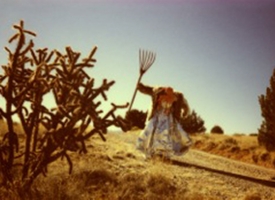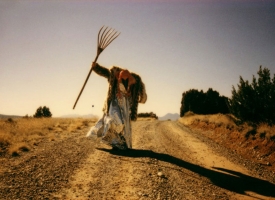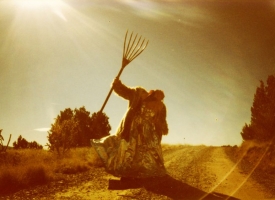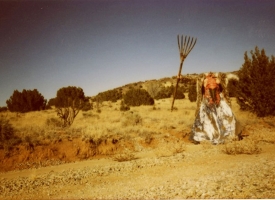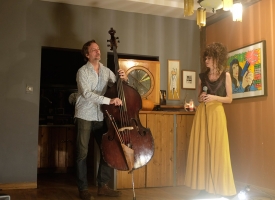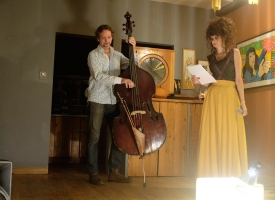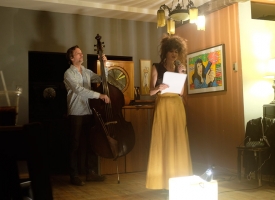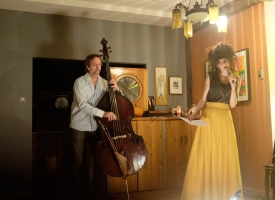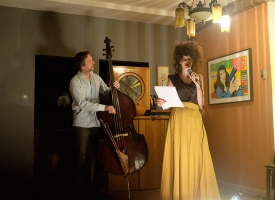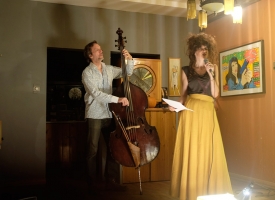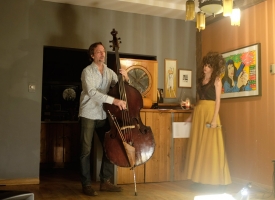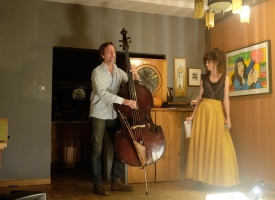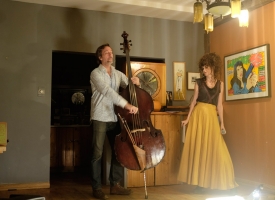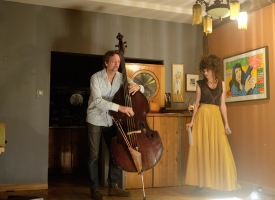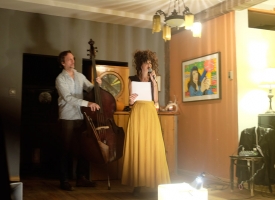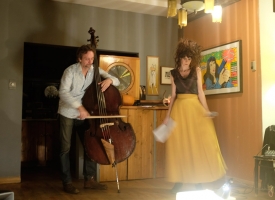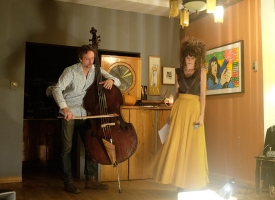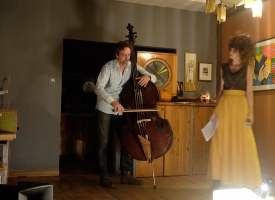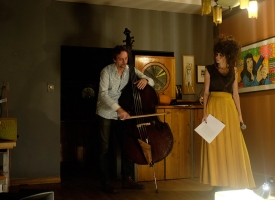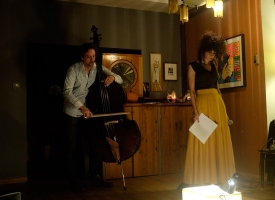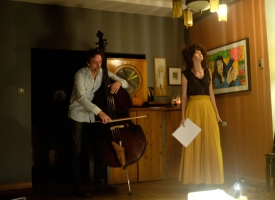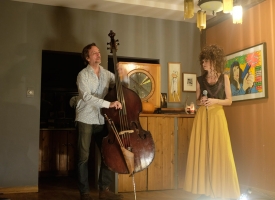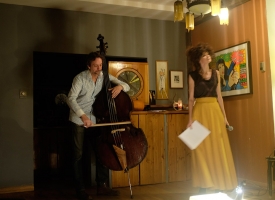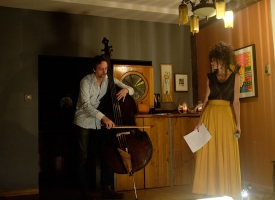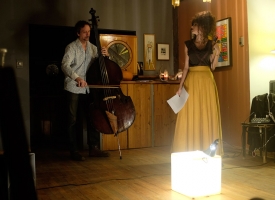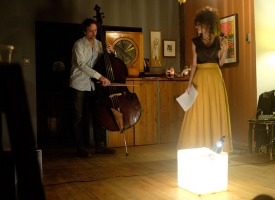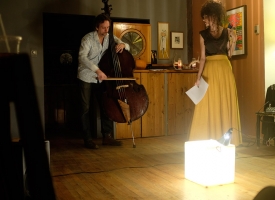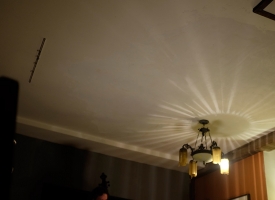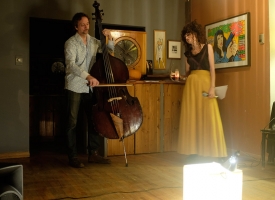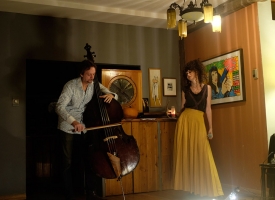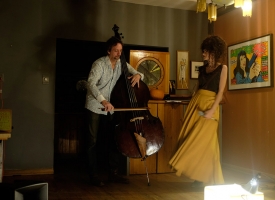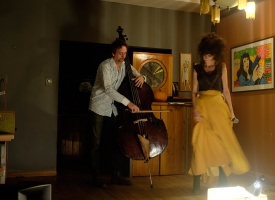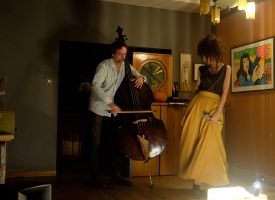CARCASS
Project Description
“Carcass” is a selection from my autobiographical project OUT HERE DEATH IS NO BIG DEAL. Through literature, photography, video, and performance it addresses the lives of women navigating gender violence in the US-Mexico borderlands, including indigenous and refugee immigrant women who are disproportionately targeted within the legacies of colonialist sexual exploitation and genocide. “Carcass” was performed at Madrid General in Madrid New Mexico in October 2016, presented by Some Serious Business with the support of Creative Capital and the Theo Westenberger Foundation. It was published in EDNA in winter 2017 by the Millay Colony.
Artist Statement
“Fieldwork” is a selection from my autobiographical project OUT HERE DEATH IS NO BIG DEAL. Through literature, photography, video, and performance it addresses the lives of women navigating gender violence in the US-Mexico borderlands, including indigenous and refugee immigrant women who are disproportionately targeted within the legacies of colonialist sexual exploitation and genocide.
I was a human rights fieldworker for twenty years, working directly with female asylum refugees who were fleeing rape camps and gang rapes in their home countries. I investigated and documented rape camps in European post-conflict zones, and worked setting up sex trafficking safe houses on the Tohono O’Odham Nation. Many of my friends and allies were raped, murdered, dumped. In the course of this work, I was kidnapped and raped. To flee the perpetrators, I became a refugee in my own country, fighting to stay alive in the face of a justice system that provided no justice. I fled through six states and found shelter in a pueblo outside Espanola. Like others, I fled for my life through a nation filled with millions of untested rape kits. A police force that refused to serve. Millions of unprosecuted perpetrators. Amidst courageous women with broken ribs, battered bodies, shattered skulls, Alongside the youngest gender violence refugees – newborns.
In OUT HERE DEATH IS NO BIG DEAL, Other survivors and I make pilgrimage to sites where we experienced gender violence. Through three heroines – Vulture, Scorpion, and Coyote, fierce survivors indigenous to the desert – my collaborators and I create rituals of protest and visibility: we bear witness at sites where we were violently taught that our lives are worth less than those of men.
For “Carcass,” I created the Vulture heroine, who invokes the survivalism and fierceness of women and girls who experience gender violence . Her gown represents both a wedding dress and a Quinceañera dress, and is made of emergency rescue blankets. She carries a pitchfork to search out evidence of the crimes. She wears a leopard skin coat that suggests the romantic glamour and beauty of “the female” hides an underside of epidemic domestic and gender violence. Like a vulture, she is a figure who can walk freely in the lands of the dead.
Just under the surface of the earth are the uneasy bodies of women and girls murdered through femicide and gender violence. Our bodies were consumed by predators human…as well as animal. The Vulture stands at these sites in rebellion and anger, healing and justice, calling attention to the injustice of this violence and gathering together the bodies of the dead. Other women and myself wear the costume of Vulture and, in her form, express our thoughts and responses to gender violence, allowing anger, grief, trauma, and other emotions to emerge during the ritual.
The participants of OUT HERE DEATH IS NO BIG DEAL pound on the soil. We open up the secrets and lies. We invite us out of the earth. There is work to be done.
We arise from the dirt as immortal hybrids – half woman, half vindicator.
We have returned to the scenes of the crimes as vigilantes. Anger is an antidote to depression. The thirst for justice is a path beyond survival. The feminine patience for rescue has proven ill-advised.
We are a gathering of women who have chosen to rectify society’s betrayal of the lives of women.
We guide all people through a resurrection and re-evaluation of past and present crimes against women.
We call into being an imminent future culture that envisions the female gendered body/mind/psyche as a location of fluid autonomous self-definition, of liberation and safety, exploration of self-expression, under our own jurisdiction, governance, and control.
Visual Art
Literature
CARCASS / Madrid, New Mexico
from Out Here Death Is No Big Deal
My girl and I walk into the café. No, that’s not how it begins. We were in an old mining town. Coal in the soul of every angry body we met. That’s how it feels, hauling up the corpses of dinosaurs every day. Carcass. That’s what made us hungry, the memory of flesh, too long dead to still be angry. Just a piece of meat. No other women around, just us, and so we toed the road. The only road leads to the café and we ate it fast. Ankles in the dirt, boots in the long black mud, we ate up that long hungry road to the café and there’s a man inside said sit right down just anywhere really, I’ll find you, just take a seat where you want, ladies, nothing to worry about, and he wiped intestines off his knife and onto his apron and there was blue calico tossed like tarps as far as we could see over tables. My girl says, What’s that smell, she says, she touches my arm, my wrist, and as always my small fur stands up for her, and she holds on. What is that odor? It is not appetizing.
O
The man calls out, Sit where you want, he calls out. Ladies. He is re-sharpening his knife. Sit where you want, I’ll find you. My girl holds onto my wrists, it smells in here, she grasps my neck in her fingers, it stinks. This smell, this blood red fear smell is something rotten, or maybe just unwashed. Sit yourselves down, he says, ladies. On the blue oilcloth calico are long strands of hair with the roots still on. You ladies, he says, you ladies sit down where you please, he says, I always find my ladies. It smells of flesh and death and he must not have let her wash first, that must be it.
O
A man walks in. He has a face of a stirrup. Too many feet have put themselves there – wedged in his face is the look of it, and he turns his head and he has an eyepatch. There is a purple stain down the side, a slice, it’s a cut, a bash, a gash, stew’s gonna be good, he says to the other man, he doesn’t see us, the bitch got it, she got it and my friend – sometimes people call her that – she stands beside me and she says it stinks in here, it is rotting, whatever he wants to feed us it is rotten and it smells. She winds her fingers through the fur between my legs. There in her hands is my seashore, my gums of a cat, but out here is a dead thing, a bloated udder, a piece of meat, she’s been cut and killed. The man fingers his eyepatch. He sees us with his eye. He says, I gave it to her and the bitch took it.
Let’s leave, she says, I don’t like how I feel here.
O
The butcher doesn’t say a word. He is in the back behind the calico curtain covered in strips of skin and the man with the eyepatch, he sees us. With his eye, he fixes us, he says, I’ll fix you, bitches, we put your kind in ditches and from behind the curtain the butcher laughs overtop the sound a throat makes trying to draw air through a tunnel filled with blood. It stinks, my girlfriend says. She and I are the only women in town. She digs her claws through the shoulders of my black leather jacket and she flies up and she carries us away. Ladies, he says from down below, our long strands of hair in his hands, with the roots still on.


